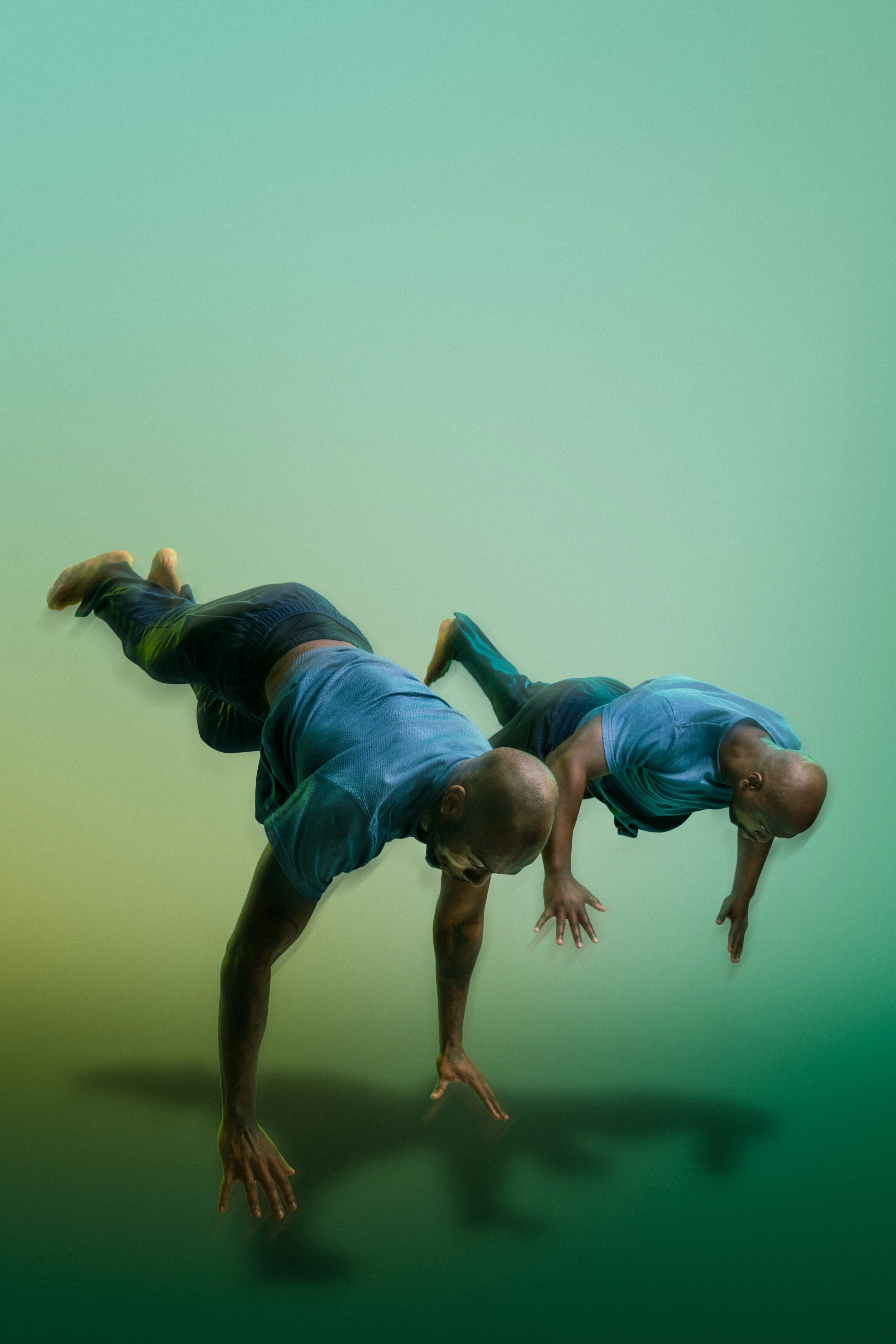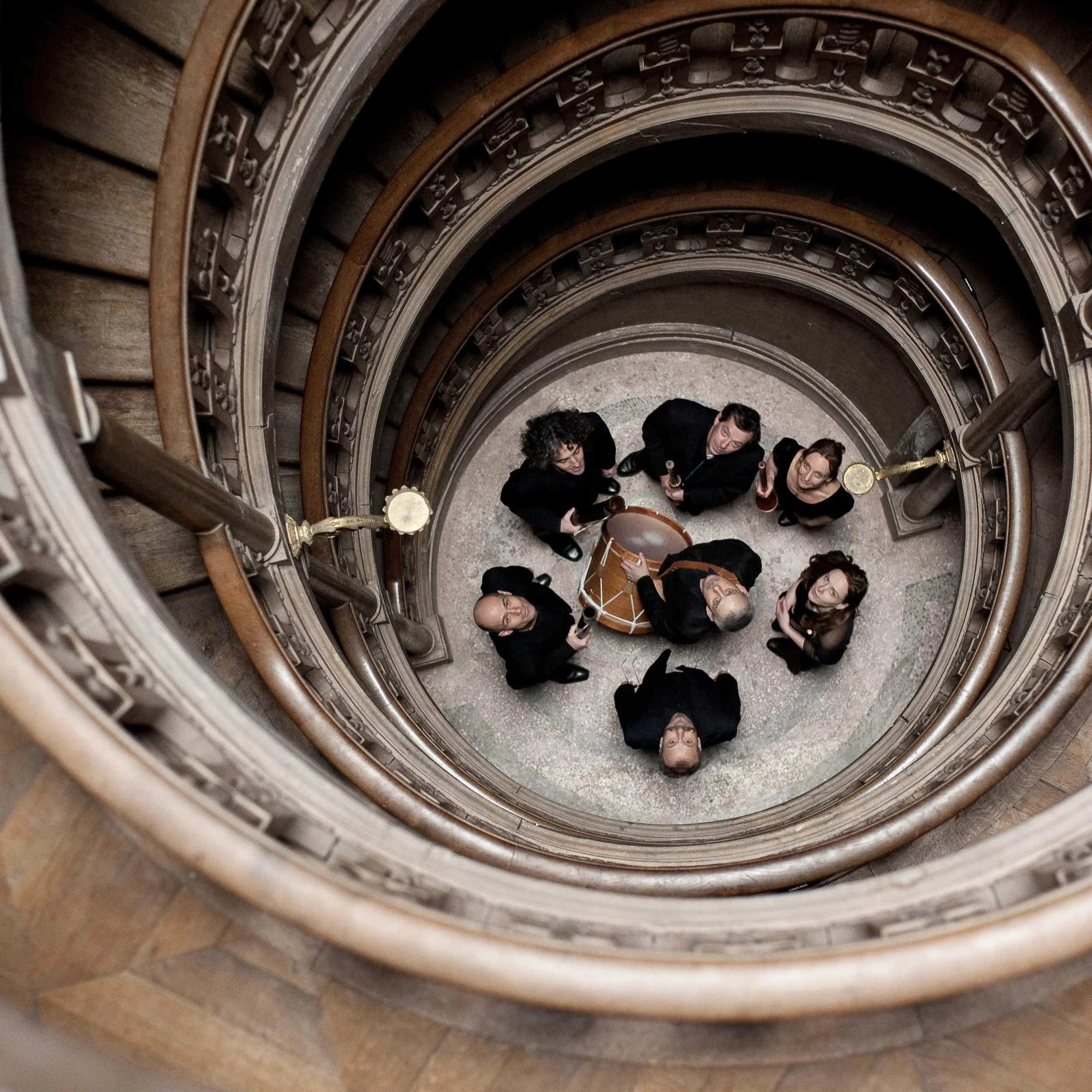East London's Joseph Toonga taps raw vulnerability and racial injustice through dance in Born to Manifest
At the PuSh International Performing Arts Festival, the Royal Ballet’s new Emerging Artist mixes urban and contemporary dance with images ripped right from the Black male experience
Joseph Toonga. Photo by Emily Crouch
Born to Manifest. Photo by Emily Crouch
The PuSh International Performing Arts Festival presents Born to Manifest at Performance Works from January 25 to 27
TO CREATE HIS powerful new duet Born to Manifest, fast-rising choreographer Joseph Toonga knew he wanted to reach beyond his own experience growing up as a Black male in East London. And so he interviewed 10 other Black men, aged 17 to 45.
“What surprised me most was how Black men perceive themselves—this negative thing about ‘I have to watch myself’, ‘I’m not allowed to be emotional’, ‘I’m not allowed to cry’,” the affable, Cameroon-born artist relates to Stir from his East London studio before heading to Vancouver for the PuSh Festival this week. “It was so consistent: you’re in a society where you say men are allowed to do that, but Black men still aren't allowed to be angry, to be emotional, to be loved.
“So the theme that came out was the lack of having space to express, but also what was nice was to hear was that there was a lot of brotherhood between a lot of guys,” he adds. “They were actually starting to develop more of a union between themselves to really talk about this stuff—’cause they can't do it in public, but they can do it with themselves.”
The resulting duet between Toonga and Theophillus “Godson” Oloyade celebrates that kind of vulnerability and brotherhood while challenging racial stereotypes. Toonga’s movement language is a fluid, energized hybrid of hip-hop styles like krunk and popping, contemporary dance, and vivid images that seem lifted straight from the evening news. Set to an original score from Michael ‘Mikey J’ Asante, the work features scenes that speak urgently to racial profiling and injustice that, sadly, happen far outside the streets of East London: an image of a Black man raising his arms instantly brings to mind the “Hands up, don't shoot" chant at street protests in the U.S., and police-violence victims from Michael Brown to Charles Kinsey. Other moments morph familiar imagery into something less expected: a sequence where one dancer pulls the other back aggressively by the neck shifts into a gentle gesture of compassion and support.
“I'm a really big fan of movies and theatre imagery; I really like pictures—and also it’s how I learned English, using imagery to remember stuff,” explains Toonga. “One of the things I really like to do is develop an image and make it an action so that people can respond to that. That’s one of the main things I try to do in Born to Manifest: it’s got selective imagery of what is a stereotype and what is not, and how do you make it come to life, and how do you make it go somewhere else, and how do you make it stereotypical?”
And so it is that Born to Manifest becomes less about the killing and violence of East London and more about empowerment, vulnerability, and friendship.
For Toonga, the piece was never meant to be political or educational. Instead he says he wants to give a multilayered picture of Black men—something he never saw growing up. Though his mother instilled in him a pride in being Black-African, Toonga remembers never feeling comfortable in his own skin when he was growing up.
“I was always made to be uncomfortable with being too big, too Black,” he says, “so I had to go through a lot of dismantling negative stuff toward how I look at my own self—and I think that comes out in Born to Manifest.”
A huge part of Toonga’s work is providing a positive space for the next generation of Black kids, with projects like his Just Us Dance Theatre (with its hip-hop apprenticeships) and the artist-led hip-hop initiative Artists4Artists (which promotes hip-hop as a vehicle for systemic change and boosts opportunities for its U.K. artists). He’s become a role model for Black male dancers: alongside the fact that works like Born to Manifest have travelled from Germany to Brazil to, as of this PuSh visit, North America, Toonga has been named official Emerging Artist at the Royal Ballet, where he’ll be mentored by celebrated choreographer Wayne McGregor.
“If you ever told me that could happen 10 years ago, I’d be like ‘Please! No way!’” he says with a laugh. “So me being there, I’m still finding it hard to accept. But I've had other people say to me, ‘I know I can get there if you’re there.’ That’s what I never had too much of growing up: I never saw someone who looked like me in that place.”
Toonga has a lot to juggle as his career takes off— even amid a pandemic, thanks to three-times-a-week rapid tests that allow him to rehearse in his London studio. Still, there’s one even greater responsibility as a role model that takes priority for this parent to two girls, three and six years old.
“I didn't have a father in my life, and when he did come into my life he died pretty quick,” he reflects. “I want my girls to see the good and bad in me. I’m normal, I’m trying, and for me that's one of my biggest challenges: trying to raise two girls who are biracial. Outside of my dance, that’s another way for me to express myself and that I really enjoy.”















